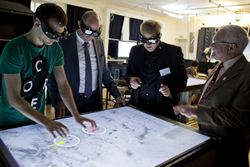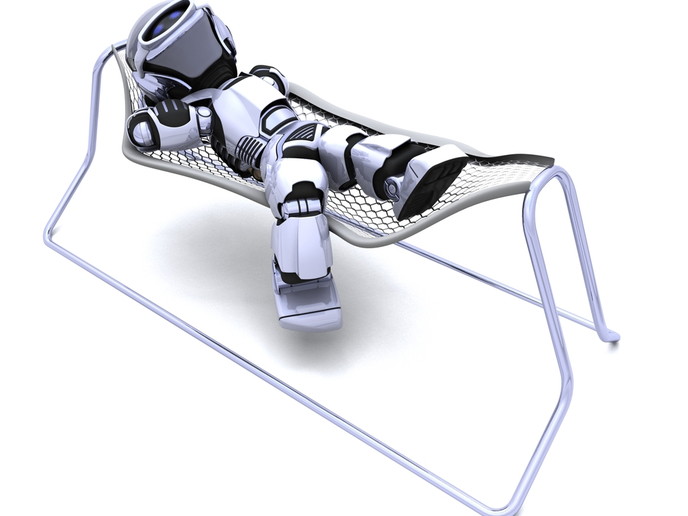New scanning technology reproduces rock art in 3D
Rock art is generally acknowledged by archaeologists as a valuable record of prehistoric and protohistoric thoughts. People represented the things that mattered to them, and rock art is a unique way of figuring out what they had in mind — be it food security, the threat of interpersonal violence or gender roles. As pointed out by Giovanna Bellandi, research assistant at the University of Cambridge, ‘Rock art can be seen as a type of ancient language or means of communication. It is not a form of art in the modern sense but is, rather, a form of language through which the people of the past communicated certain ideas.’ Rock art is also very different from one region of Europe to another: ‘It is strictly related to the place in which it was made,’ points out Bellandi. ‘It is necessary to consider the geographical context, the particular type of rock and, probably, the social context. There remain many open questions about rock art, and only by continuing research with different and new approaches can we hope to answer these questions.’ The 3D-PITOTI (3D acquisition, processing and presentation of prehistoric European rock-art) project focuses on Valcamonica in the Lombardy region of Italy — a UNESCO World Heritage site home to at least 100 000 rock art images known as ‘Pitoti’ and perhaps twice as many more hidden across the region. Most scientific and technical experts with extensive knowledge of Valcamonica joined forces to develop the technology to capture, process and visualise in 3D what is reputed as some of the best rock art in the world. Together they hope to enable a wider audience to experience the Pitoti in an interactive and engaging manner. ‘Most prior recording was 2D — photos or tracings of 3D forms carved into the rock surfaces,’ says project coordinator Dr Sue Cobb from the University of Nottingham. ‘The third dimension adds valuable information, for instance with the superimposition of carvings that can allow us to develop relative chronologies.’ Team member Craig Alexander noted that while this is not the first time a 3D recording technique has been used in this field, this is the first time it results in digital recordings: ‘Over 40 years ago a series of plaster casts was taken in Valcamonica that could be reproduced and exhibited away from the park. However, digital data is weightless and rapidly transferred from place to place — making our 3D models accessible to anyone with a decent internet connection. A tangible representation of the rock art in a context away from the real valley can also be produced through modern 3D printing technologies.’ A new set of tools The team’s developments resulted in an entirely new pipeline for multi-scale acquisition, processing and visualization of rock art. A new rock-art scanning system capturing rock art with sub-millimetre accuracy was developed, and new techniques for flight path planning of Unmanned Aerial Vehicles (UAVs) allow an efficient and effortless capturing of the terrain surrounding individual Pitoti figures on a centimetre to kilometre scale. For the processing stage, the project developed techniques to accurately register and combine a large number of these 3D scans into a coherent multi-scale 3D model. Advanced segmentation and classification tools support the semi-automatic identification of different types of Pitoti such as people, buildings and animals and, finally, the visualization and interaction tools allow the exploration of the Pitoti in their natural surrounding on a wide variety of platforms, from tablets and notebooks to head-mounted displays and the Pitoti Scientists’ Lab, a unique high-end 3D visualization facility at Bauhaus-Universität Weimar. ‘The software developed in the project is extremely useful, as it allows for integrating the possibilities of a normal database, organising and storing the data, and also having the Pitoti located in their natural 3D environment and not only on a two-dimensional map,’ says Paolo Medici, archaeologist at the Camunian Centre of Prehistoric Studies. ‘The database has been created on the basis of the archaeologists’ request, so it meets the need for advanced digital rock-art research.’ The benefits of 3D-PITOTI’s system are manifold. Whilst state-of-the-art recording of rock art (by tracing on plastic sheets) takes a lot of time and skills and is an analogue technique, the new technology allows archaeologists to scan in high resolution, at multiple scales and in less time — regardless of the number of engravings. The combination of these reconstructions within a single database also enables researchers to concentrate on the big picture. ‘Working with an integrated digital pipeline, large numbers of Pitoti can be compared between each other and to rock art at other locations. . This ability to handle large amounts of data also helps us find patterns in the art that might suggest its meaning,’ Dr Cobb says. Such a comprehensive digital rock-art library used in combination with Weimar’s collaborative 3D visualisation facilities defines the new standard for rock-art research. Straight to the working field The consortium hopes to keep developing and testing the project’s technologies over the months to come. Graz University of Technology and ArcTron 3D will be working towards the next prototype of the scanner, and several of the archaeologists at the University of Cambridge have already voiced their interest in using the technologies beyond the framework of the project. Craig Alexander would like to use technologies like image segmentation and classification in the analysis of aerial imagery in order to find new sites such as Neolithic villages in Puglia, while Liliana Janik is hoping to use it as part of her equipment while recording rock art. Frederick Baker, a Pitoti researcher, is interested in filming opportunities: ‘I hope the scanner will become the new standard piece of fieldwork equipment. As a film director I will continue to use the scanning technique to create new film in images and a new filmic language,’ he concludes.







